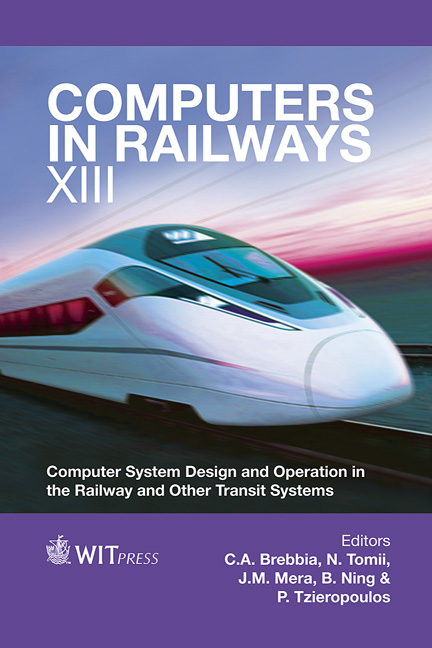Integrating Driving And Traffic Simulators For The Study Of Railway Level Crossing Safety Interventions: A Methodology
Price
Free (open access)
Transaction
Volume
127
Pages
12
Page Range
719 - 730
Published
2012
Size
202 kb
Paper DOI
10.2495/CR120611
Copyright
WIT Press
Author(s)
G. S. Larue, I. Kim, A. Rakotonirainy, L. Ferreira & N. Haworth
Abstract
Safety at Railway Level Crossings (RLXs) is an important issue within the Australian transport system. Crashes at RLXs involving road vehicles in Australia are estimated to cost $10 million each year. Such crashes are mainly due to human factors; unintentional errors contribute to 46% of all fatal collisions and are far more common than deliberate violations. This suggests that innovative intervention targeting drivers is particularly promising to help improve RLX safety. In recent years there has been a rapid development of a variety of affordable technologies which can be used to increase driver’s risk awareness around crossings. To date, no research has evaluated the potential effects of such technologies at RLXs in terms of safety, traffic and acceptance of the technology. Integrating driving and traffic simulations is a safe and affordable approach for evaluating these effects. This methodology will be implemented in a driving simulator, where we recreated realistic driving scenario with typical road environments and realistic traffic. This paper presents a methodology for evaluating comprehensively potential benefits and negative effects of such interventions: this methodology evaluates driver awareness at RLXs, driver distraction and workload when using the technology. Subjective assessment on perceived usefulness and ease of use of the technology is obtained from standard questionnaires. Driving simulation will provide a model of driving behaviour at RLXs which will be used to estimate the effects of such new technology on a road
Keywords
railway level crossings, intelligent transport systems, driving and traffic simulations





